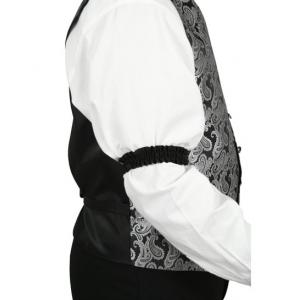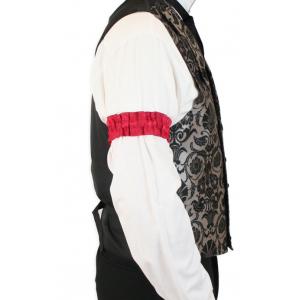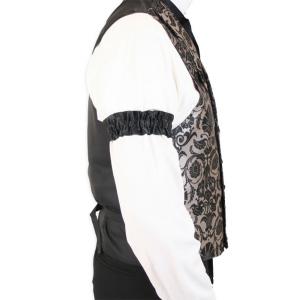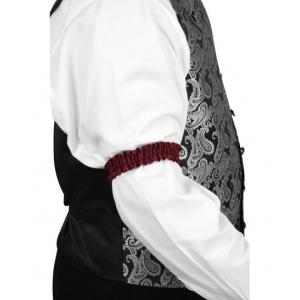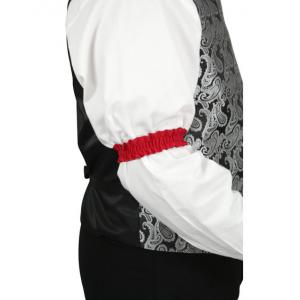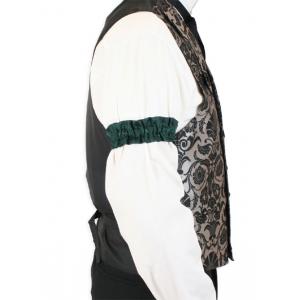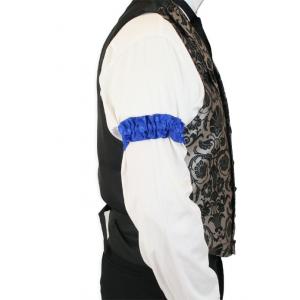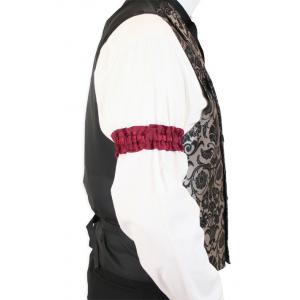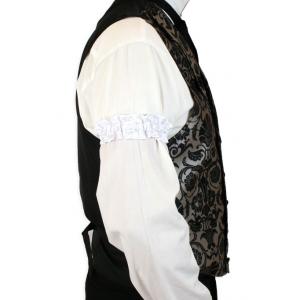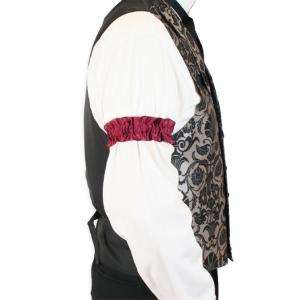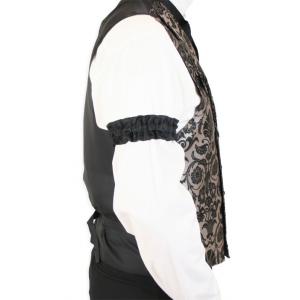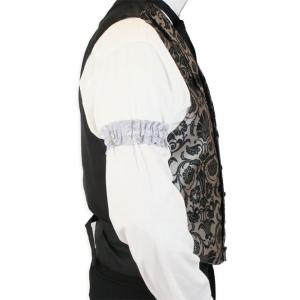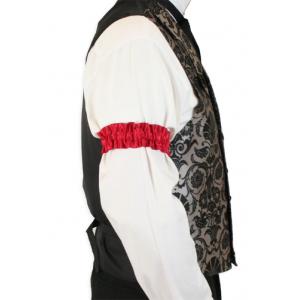Prices and Availability Subject to Change. Please call 800-997-4311 for more Information.
13 results
Q&A About Victorian Sleeve Garters
Why did men wear garters on their sleeves?
Men wore sleeve garters to adjust shirt sleeve length at a time when shirts came in standard sleeve lengths that were typically too long for most wearers. These practical accessories allowed men to customize the fit of ready-made shirts, keeping sleeves from sliding down over the hands during work, preventing soiling of cuffs, and maintaining a neat appearance without requiring expensive custom tailoring.
Why did cowboys wear garters on their sleeves?
Cowboys wore sleeve garters primarily for practical purposes in their demanding work environment. The garters kept their oversized shirt sleeves from interfering with rope handling, cattle work, and other manual tasks that required dexterity. They also protected expensive shirt cuffs from excessive wear and soiling during ranch work, and allowed cowboys to instantly adjust sleeve length without changing clothes when transitioning between different types of tasks throughout their workday.
Why did bartenders wear garters on their sleeves?
Bartenders wore sleeve garters to protect their shirt cuffs from becoming soiled or wet while mixing drinks and cleaning glasses. These functional accessories allowed them to adjust sleeve length for better dexterity when handling bottles and glassware, prevented sleeves from dipping into drinks or washing water, maintained a professional appearance during long shifts, and became part of the classic bartender image that signaled attention to detail and cleanliness to customers.
MORE Q&A







